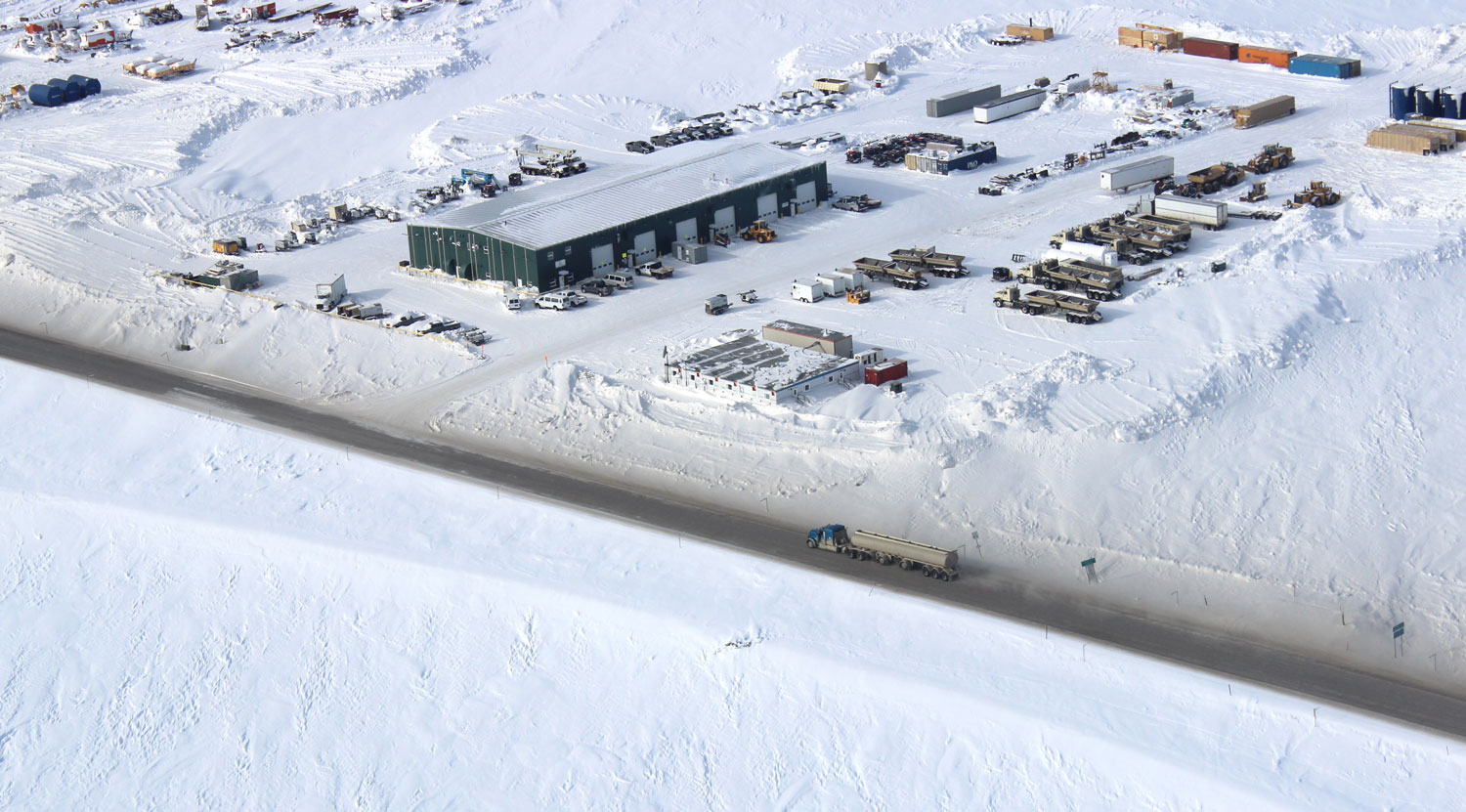
laska faces some monumental infrastructure challenges. We are a large state with few residents, mostly living in three major population areas and using most of the same roads, with important transportation-related connections between them that must be maintained despite harsh weather that degrades those transportation routes.A March 2021 National Infrastructure report card by the American Society of Civil Engineers, or ASCE, Alaska section gave the state a C- overall for the condition of its existing infrastructure—that covers everything from aviation and broadband availability to drinking water, solid waste services, roads, bridges, and dams.
Alaska has about 15,700 lane miles of road, 3,737 of which are paved, noted Dave Gamez, an ASCE member and engineer with Lounsbury & Associates, Inc. at a September 29 presentation to Commonwealth North where the infrastructure report card was discussed. Comparatively, Texas, at less than half the size of Alaska, has 675,600 lane miles of paved road.
Roughly 72 percent of Alaska residents live in Anchorage/Matanuska-Susitna Borough, Fairbanks-North Star Borough, or the Juneau-Douglas area, Gamez said. About 23 percent of the population lives in 21 towns with populations greater than 1,000, and the remaining 5 percent of the population lives in 122 villages with populations under 1,000 people.
“Operations and maintenance are one of the largest challenges,” Gamez said at the presentation.
With weather extremes—Ketchikan gets 140 inches of rain and Valdez sees about 330 inches of snow each year—in addition to broad temperature fluctuations and numerous natural disasters each year, transportation maintenance is challenging.
“Think of the major infrastructure challenges faced by the state. The Port of Alaska is crumbling and in urgent need of major repair. Many rural communities still lack running water and sewer. In Alaska, 25 percent of the roads have been designated as in poor or mediocre condition. These realities cost all of us. Any Alaskan who has survived potholes and frost heaves during breakup can attest to the fact that our roads desperately need improvement,” stated an October 25 opinion piece published in the Anchorage Daily News and co-authored by AGC Executive Director Alicia Amberg and other local industry leaders.
The November passage of the federal Infrastructure Investment and Jobs Act, or IIJA, funnels $1.2 trillion into physical infrastructure in the United States, which includes roughly $3.5 billion in highway funding for Alaska over the next five years for construction, repairs, and maintenance. It also includes funding for airports, buses and ferries, railroads, water, broadband, ports, energy and natural resource development projects, and for broader efforts such as permitting improvements, community climate change resilience projects, and a $75 million investment in the Denali Commission, which funds economic development and infrastructure projects in rural Alaska.
“This changes things for us, in a lot of good ways,” said Alaska Department of Transportation & Public Facilities, or DOT&PF, Commissioner Ryan Anderson at a November 10 presentation about upcoming DOT&PF projects at the 2021 Annual AGC of Alaska Conference. “We are recognizing that we have to be cautious with our contractors and making sure that we’re making good decisions on the DOT front, that we’re not trying to do things that don’t work these days, especially considering the supply chain and inflation.”
Anderson says the department was, a few days after it passed, still trying to understand everything contained in the bill. In the short term, he says, the department will accelerate projects on its state transportation improvement plan, moving projects up a year where possible. In the longer term, he says the department will consider new projects, particularly those that focus on highway safety.
He added that the bill doesn’t only pertain to roads; the department will be looking at viable transit projects and how to use bill-related funding to improve the Alaska Marine Highway system and boost aviation projects.
“It doubles aviation spending per year for the next five years,” Anderson told conference attendees.
The bill will benefit Alaskans in many ways beyond surface transportation projects and funding. It included some measures that AGC of Alaska and AGC of America were not in favor of, such as an expansion of Buy America requirements to include construction materials for federally funded projects and failure of the bill to address the long-term solvency of the federal Highway Trust Fund. However, despite some reservations, both groups and many other natural-resource industry groups supported its passage.
“It’s not a perfect bill. But it’s a good bill overall. It’s a very good bill for Alaska and we were supportive of it,” Amberg told attendees at a November 11 Legislative Update on the Bipartisan Infrastructure Bill, a presentation that was part of the AGC of Alaska Annual Conference.